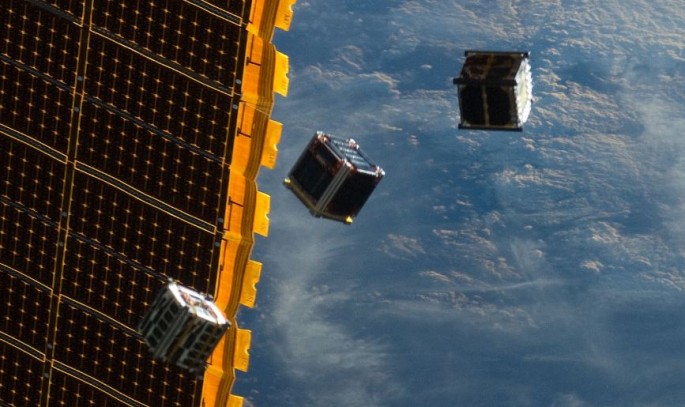The U.S. Air Force wants to dramatically improve long-range radio communications to its dispersed units by detonating "plasma bombs" that will make the ionosphere more radio reflective.
Problem is, the Air Force doesn't know how it's done and has awarded three contracts to researchers from the academe and private industry to do so.
Plasma bombs consist of huge quantities of radio-reflecting ionized gas. The challenge facing the Air Force's three teams is how to produce these plasma bombs and fit them into small CubeSats with a size of 10 cm x 10 cm x 10 cm. A huge fleet of these CubeSat "plasma bombers" will be needed to do the job.
The CubeSats will disperse this ionized gas into the ionosphere some 60 miles up using a plasma generator small enough to fit within them. The generator will control how the plasma is dispersed.
Bouncing radio signals between the ionosphere and the ground causes the signals to zigzag much farther. At night the density of the ionosphere's charged particles is higher, making it more reflective.
Each team is working out a design for the plasma bombs. The theoretical first stage of the project requires researchers to come up with an atmospheric plasma delivery method. Selected researchers will later be invited to test their proposal in a vacuum chamber simulator and eventually on exploratory flights.
General Sciences of Souderton, Pennsylvania and Enig Associates of Bethesda, Maryland are working with scientists at Drexel University and the University of Maryland on separate methods to produce plasma.
The $150,000 contract with General Sciences and Drexel University will fund the development of a plasma gas generation device "based on the use of highly exothermic condensed phase reactions yielding temperatures considerably higher than the boiling points of candidate metal elements with residual energy to maximize their vapor yield and, with high probability to enter associative ionization (chemi-ionization) reactions with atmospheric oxygen."
The hardware development for the controlled-release of the plasma bombs will significantly benefit the defense of the United States, claims the team.
Enig Associates said its collaboration with the University of Maryland will lead to "an innovative and novel electrical approach, using in-house designed explosive-driven flux compression generators to convert explosive chemical energy into electromagnetic energy with very high current output and superb energy conversion efficiency."
The partners aim to design "an integrated generator device whose form factor fits inside an air-launched vehicle or sounding rocket."



























